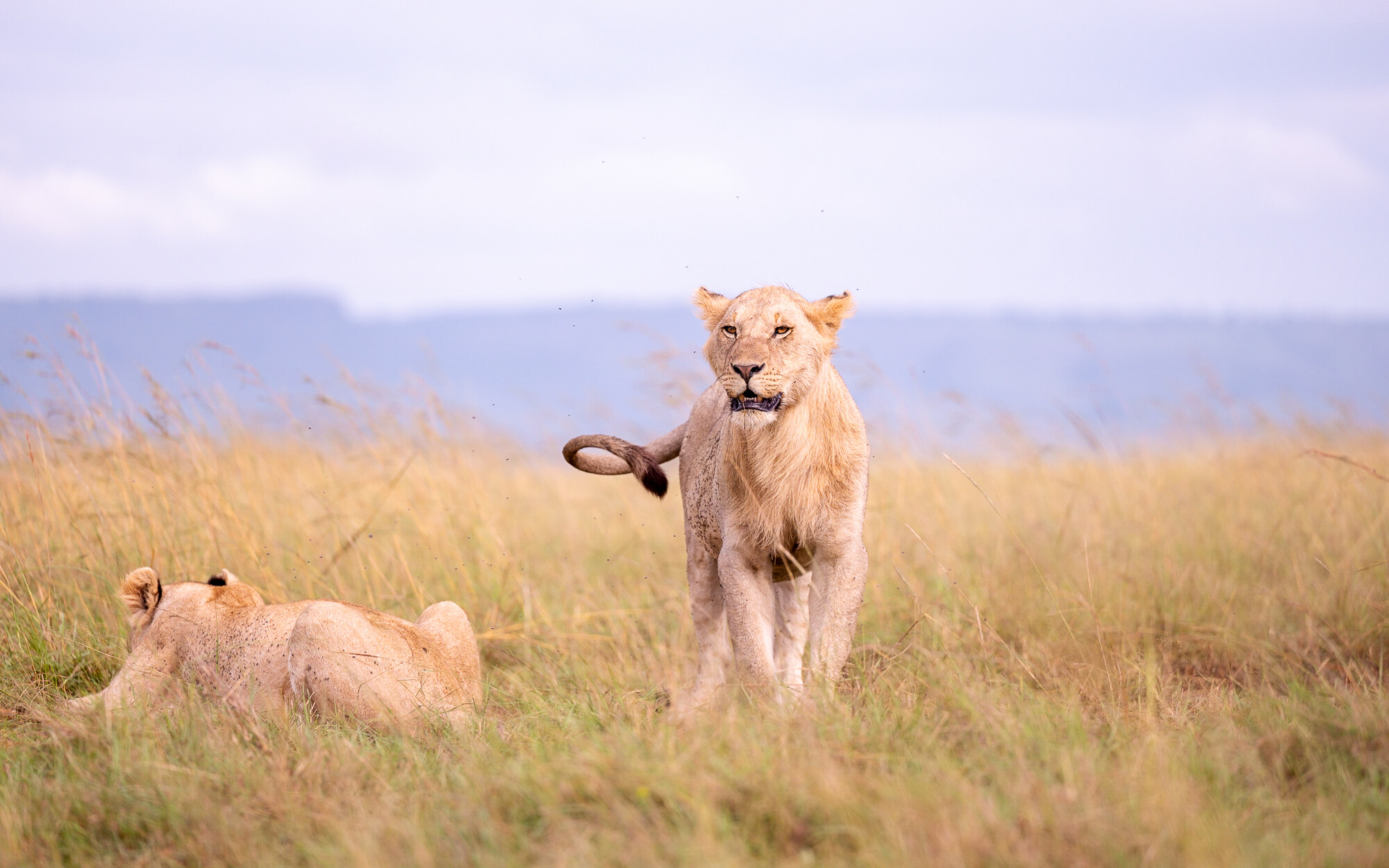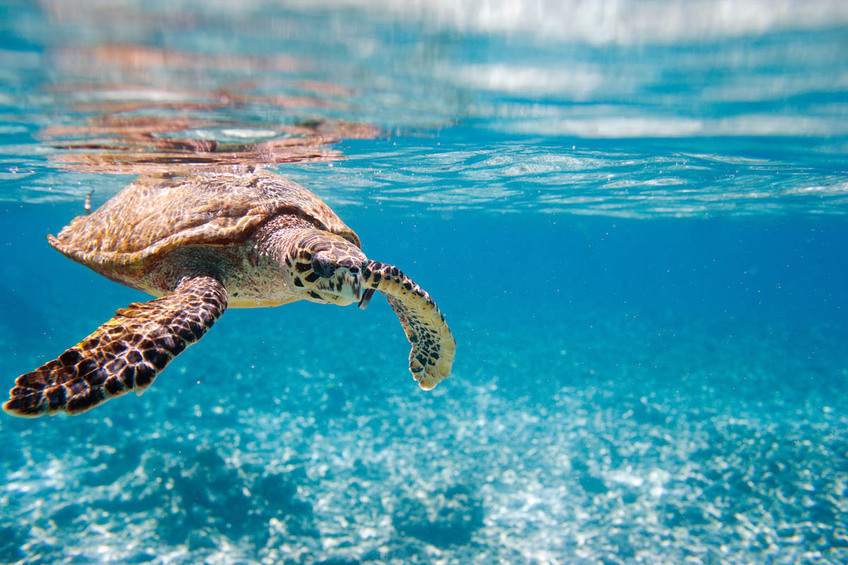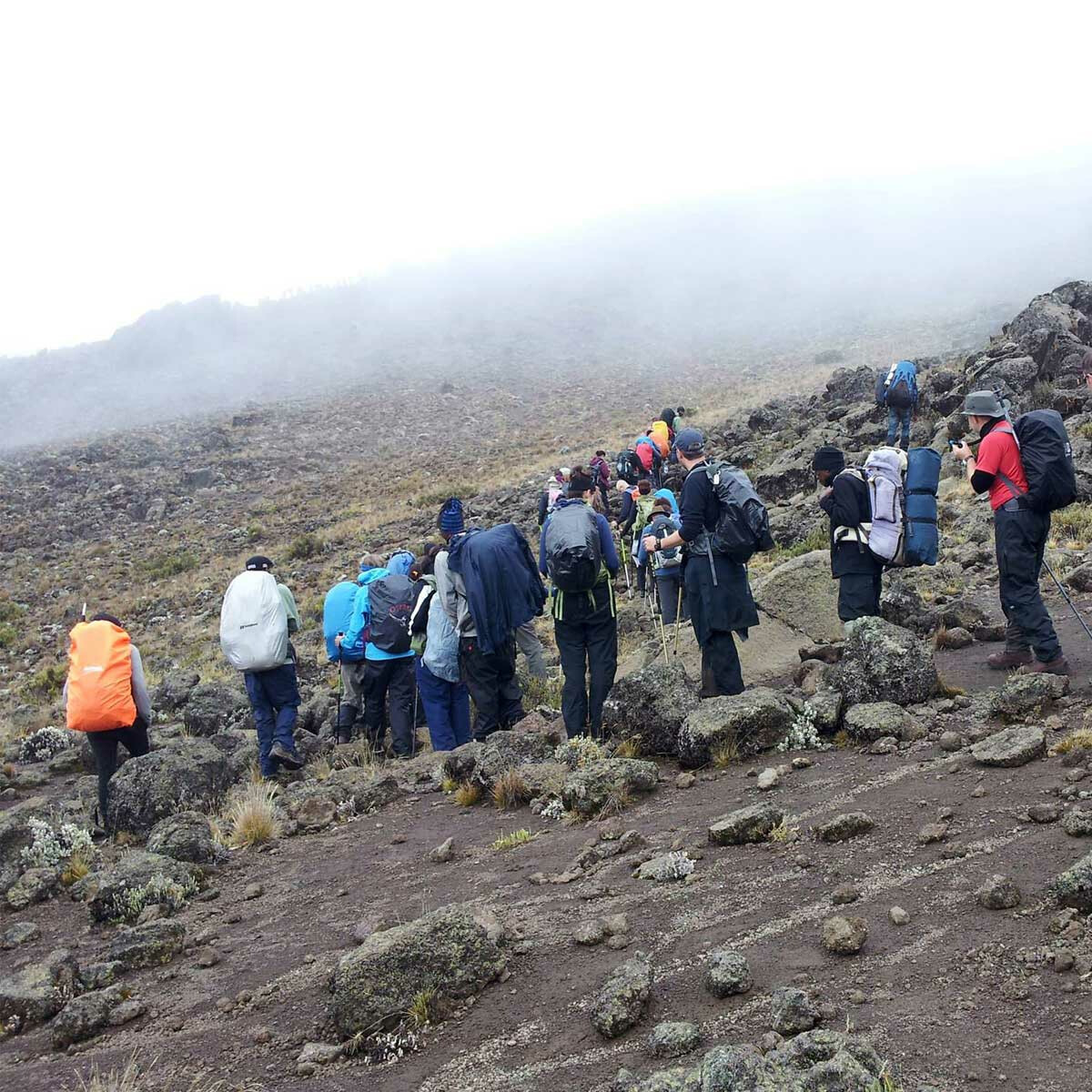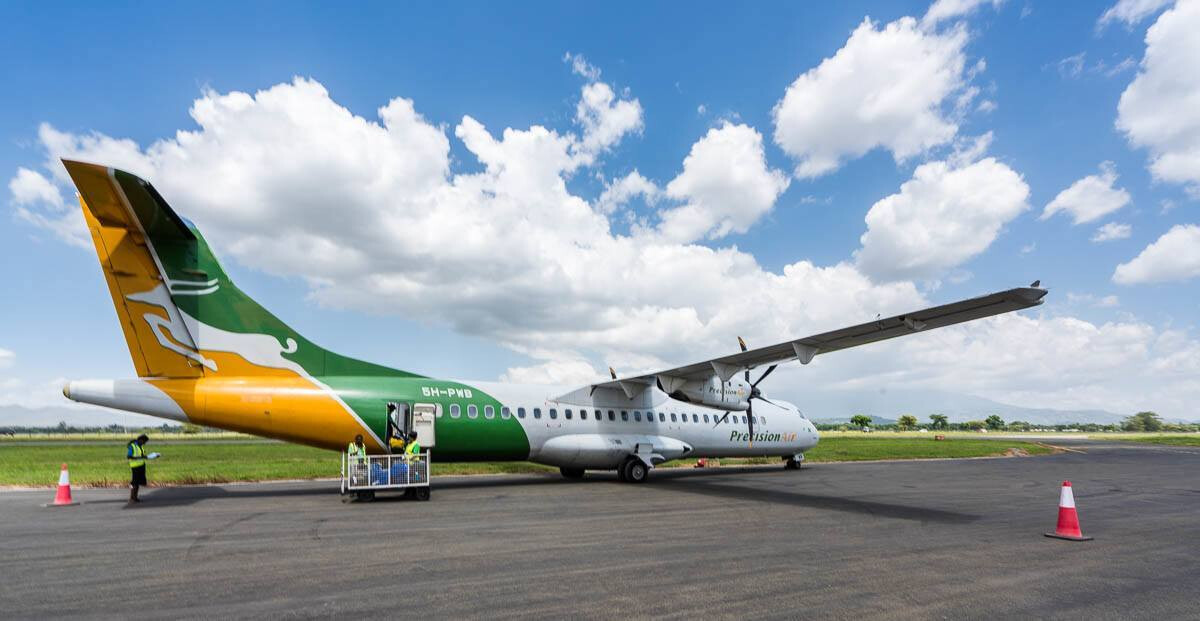What to Pack and Prepare for an East African Safari Embarking on an East African safari is a thrilling adventure that requires thoughtful planning and preparation. Whether you’re exploring the plains of the Serengeti, the Ngorongoro Crater, or Kenya’s Maasai Mara, having the right items and mindset will ensure a comfortable and unforgettable experience. Here’s a comprehensive guide to help you pack and prepare for your safari adventure: 1. Clothing When packing clothes, prioritize comfort, practicality, and neutrality. Keep in mind the weather variations between mornings, afternoons, and evenings. Essential Clothing Items Neutral-colored clothing: Khaki, beige, and olive green are ideal for blending in with the environment and minimizing attraction to insects. Avoid bright colors and dark blues, which can attract tsetse flies. Lightweight long-sleeved shirts and trousers: These offer protection against sunburn, insects, and thorny vegetation. T-shirts and tank tops: For warmer days. Warm layers: Early mornings and evenings can be chilly, especially during game drives. Pack a fleece jacket or sweater. Waterproof jacket: Useful during the rainy season (March to May and November). Comfortable shorts: For relaxing at the lodge during the day. Wide-brimmed hat: Provides shade and protects against the sun. Swimwear: Many lodges and camps have pools. Comfortable walking shoes: Lightweight hiking boots or sneakers for nature walks and easy trekking. Socks: Bring moisture-wicking socks to keep your feet dry. 2. Accessories Small yet crucial items can make all the difference in your safari experience. Sunglasses: Opt for polarized ones to reduce glare. Light scarf or bandana: Protects your face from dust during game drives. Daypack: A small backpack for carrying essentials like water, snacks, and cameras. Binoculars: A must-have for spotting wildlife from a distance. Reusable water bottle: Stay hydrated while being eco-friendly. Torch or headlamp: Useful for campsites or lodges with limited lighting. Travel laundry kit: Some camps may offer laundry services, but it’s always handy to have a kit for quick washes. 3. Personal Care Items Stay fresh and protected in the wild. Sunscreen: High SPF to protect against the strong African sun. Lip balm with SPF: Prevents chapped lips caused by sun and wind. Insect repellent: Choose one with DEET to ward off mosquitoes and other insects. Toiletries: Bring travel-sized shampoo, soap, toothpaste, and a toothbrush. Moisturizer: Helps combat dry skin from the sun and wind. Hand sanitizer and wet wipes: Essential for hygiene in remote areas. Prescription medications: Bring sufficient supplies of any required medicines. First aid kit: Include plasters, painkillers, antihistamines, and anti-diarrhea tablets. 4. Electronics and Photography Gear Capture your safari memories and stay connected. Camera and lenses: A DSLR or mirrorless camera with a telephoto lens (200mm or longer) is ideal for wildlife photography. Extra memory cards and batteries: Safaris often offer endless photo opportunities, so bring backups. Power bank: To charge devices on the go. Universal travel adapter: Ensure compatibility with East African plugs. Smartphone and charger: For quick photos, GPS, and staying connected. Portable hard drive: To back up your photos daily. Binoculars: (Yes, it’s worth mentioning twice!) 5. Travel Documents and Essentials Make sure your paperwork is in order before your trip. Passport: Ensure it’s valid for at least six months from your travel date. Visa: Check the visa requirements for the specific East African countries you’re visiting. Travel insurance: Covers medical emergencies, trip cancellations, and lost belongings. Vaccination certificates: Yellow fever vaccination may be required depending on your travel history. Copies of important documents: Photocopy your passport, visa, travel insurance, and tickets. Store digital copies as well. Cash and credit cards: US dollars are widely accepted, but carry small denominations. Inform your bank of your travel plans. 6. Preparing for Health and Safety Stay safe and healthy during your safari by taking the following precautions: Vaccinations: Consult your doctor about required and recommended vaccines, such as yellow fever, typhoid, and hepatitis. Malaria prophylaxis: East Africa is a malaria-prone region, so take antimalarial medication as prescribed. Stay hydrated: Drink plenty of water to avoid dehydration. Avoid tap water: Stick to bottled or filtered water. Follow your guide’s instructions: Safety is paramount when encountering wildlife. 7. Miscellaneous Tips Pack light: Many safari lodges and camps have strict luggage weight limits, especially if you’re flying on small bush planes (usually 15 kg/33 lbs in soft-sided bags). Learn some Swahili: Knowing basic phrases like “Jambo” (Hello) and “Asante” (Thank you) can enhance your interactions with locals. Prepare for limited connectivity: Wi-Fi may be available in some lodges but is often slow or unreliable. Embrace the opportunity to disconnect. Bring a journal: Record your experiences, sightings, and reflections. Final Thoughts With proper planning and packing, your East African safari will be an experience of a lifetime. By ensuring you have all the essentials, you’ll be well-prepared to fully enjoy the breathtaking landscapes, incredible wildlife, and rich cultures of this remarkable region.
Turtles in Zanzibar: Where to Find Them?
Swimming with Turtles in Zanzibar: Where to Find Them? Zanzibar, the stunning archipelago off the coast of Tanzania, is renowned for its pristine beaches, turquoise waters, and abundant marine life. Among its natural wonders is the opportunity to swim with sea turtles, a magical experience that draws tourists and nature enthusiasts alike. Whether you’re a snorkeler, diver, or just a beach lover, Zanzibar offers several incredible locations to encounter these gentle marine giants. Here’s everything you need to know about where and how to swim with turtles in Zanzibar. 1. Baraka Natural Aquarium, Nungwi Located in the northern tip of Zanzibar in Nungwi, the Baraka Natural Aquarium is one of the most popular spots to interact with sea turtles. This sanctuary offers a safe haven for injured or rescued green sea turtles. The turtles are cared for and eventually released back into the wild once they recover. Visitors can: Swim and feed turtles in the natural lagoon. Learn about sea turtle conservation efforts from the guides. Support eco-tourism and contribute to the protection of these endangered creatures. The calm, shallow waters make it ideal for families and non-swimmers. Best Time to Visit: Morning hours for smaller crowds and cooler temperatures. 2. Mnarani Marine Turtle Conservation Pond Also situated in Nungwi, the Mnarani Marine Turtle Conservation Pond is a community-driven initiative aimed at protecting the local turtle population. This natural lagoon, fed by the Indian Ocean, is home to green and hawksbill turtles. Visitors have the chance to: Swim with turtles in a more intimate and educational setting. Learn about the challenges sea turtles face, including poaching and plastic pollution. Witness the release of rehabilitated turtles into the ocean during special events. Best Time to Visit: Between February and April, when baby turtles are released into the wild. 3. Mnemba Atoll For those who want a wilder and more natural experience, Mnemba Atoll is a must-visit. This private marine conservation area, located off the northeast coast of Zanzibar, offers an unparalleled snorkeling and diving experience. While turtles aren’t guaranteed to appear, the odds are high, especially during the nesting season. Why Mnemba Atoll is Special: The coral reefs teem with marine life, including green turtles and hawksbill turtles. Visibility is excellent, often exceeding 30 meters, making it a dream for underwater photography. The atoll’s tranquility and exclusivity add to its charm. Visitors often book half-day or full-day snorkeling trips from Matemwe or Nungwi to explore this underwater paradise. Best Time to Visit: November to February, when the water is calm and clear. 4. Kizimkazi Kizimkazi, located in southern Zanzibar, is famous for its dolphin tours, but it’s also a lesser-known spot to encounter turtles. While swimming with turtles here might not be as common as in Nungwi or Mnemba Atoll, the rich marine ecosystem makes it worth a visit. Combine your trip with a chance to snorkel among coral reefs or explore the historic Kizimkazi Mosque, one of the oldest Islamic buildings in East Africa. Best Time to Visit: Early mornings, when marine life is most active. 5. Jozani Forest Mangrove Swamps While Jozani Forest is primarily known for its rare red colobus monkeys, the nearby mangrove swamps also provide habitat for juvenile sea turtles. Kayaking or walking through the mangroves offers a chance to observe these young turtles in their natural environment. Why Jozani is Unique: A blend of marine and terrestrial ecosystems. Opportunities to learn about mangrove conservation and its role in supporting marine life. A peaceful escape from the bustling beach areas. Tips for Swimming with Turtles in Zanzibar To ensure a memorable and eco-friendly experience, keep the following tips in mind: Respect Wildlife: Avoid touching or disturbing the turtles. Maintain a safe distance and let them approach you if they feel comfortable. Choose Ethical Tours: Opt for tours or centers that prioritize conservation and sustainability. Bring Reef-Safe Sunscreen: Protect both your skin and the marine ecosystem by using biodegradable sunscreen. Support Local Conservation Efforts: Many turtle sanctuaries rely on donations and entrance fees to continue their work. Your visit can make a difference. Pack Snorkeling Gear: While some tours provide equipment, bringing your own ensures better quality and a more comfortable fit. When to Visit Zanzibar for Turtle Experiences Zanzibar’s tropical climate makes it a year-round destination, but the best months for swimming with turtles are: June to October: Cooler and dry season with calm waters. November to February: Warmer season with excellent underwater visibility. Avoid the long rains (March to May), as the sea can be rough, and visibility may be reduced. A Magical Encounter Awaits Swimming with turtles in Zanzibar is more than just a tourist activity; it’s a chance to connect with nature and support vital conservation efforts. Whether you visit a sanctuary or explore the open ocean, these experiences create memories that last a lifetime. So pack your swimsuit, grab your snorkeling gear, and prepare for an unforgettable adventure in the heart of the Indian Ocean.
Best Hikes in Tanzania: Explore the Land of Adventure
Best Hikes in Tanzania: Explore the Land of Adventure Tanzania is renowned for its stunning landscapes, iconic wildlife, and rich culture. For hiking enthusiasts, the country offers a diverse array of trails that promise breathtaking views, unique ecosystems, and unforgettable experiences. Whether you are an experienced trekker or a casual adventurer, Tanzania has something for everyone. Here is a detailed guide to the best hikes in Tanzania. 1. Mount Kilimanjaro – The Roof of Africa Overview: Mount Kilimanjaro, the tallest mountain in Africa and the world’s highest free-standing peak, is a bucket-list destination for hikers. Standing at 5,895 meters (19,341 feet), it offers a challenging yet rewarding experience. Popular Routes: Lemosho Route: Known for its scenic beauty and high success rate, the Lemosho Route is perfect for those who want a gradual ascent. Machame Route: Also called the “Whiskey Route,” this is a popular choice for adventurous hikers due to its steep and diverse terrain. Marangu Route: Dubbed the “Coca-Cola Route,” this is the easiest and most direct path, ideal for beginners. Highlights: Stunning views of the summit glaciers. Passing through five distinct ecological zones. Experiencing the sunrise at Uhuru Peak. Best Time to Hike: January to March and June to October. 2. Mount Meru – Kilimanjaro’s Little Brother Overview: Located in Arusha National Park, Mount Meru is Tanzania’s second-highest mountain at 4,566 meters (14,980 feet). It’s a great acclimatization hike for those planning to climb Kilimanjaro. Trail Features: A mix of lush rainforests and alpine deserts. Wildlife sightings, including buffalo, giraffes, and monkeys. The thrilling walk along the narrow crater rim. Highlights: Panoramic views of Mount Kilimanjaro and Arusha. Sunrise from Socialist Peak. Exploring the Momella Lakes and Ngurdoto Crater. Best Time to Hike: June to February, with December to February offering the clearest views. 3. Ngorongoro Highlands – A Cultural and Scenic Journey Overview: The Ngorongoro Conservation Area is famous for its vast caldera, but it also offers incredible hiking trails that combine natural beauty with Maasai culture. Popular Trails: Empakaai Crater: A moderate hike down to a crater lake surrounded by lush forest. Olmoti Crater: A gentle trek to a waterfall and a chance to interact with Maasai communities. Ngorongoro to Lake Natron Trek: A multi-day adventure with views of active volcanoes and diverse landscapes. Highlights: Spectacular views of the Ngorongoro Crater. Encounters with Maasai herders and their villages. Spotting flamingos at Lake Natron. Best Time to Hike: June to October and December to March. 4. Udzungwa Mountains – The Eastern Arc’s Hidden Gem Overview: Udzungwa Mountains National Park is part of the Eastern Arc Mountains, often called the “Galápagos of Africa” due to their unique biodiversity. It’s a haven for nature lovers and birdwatchers. Popular Trails: Sanje Waterfalls Trail: A short but rewarding hike to a 170-meter waterfall. Mwanihana Trail: A challenging route to the second-highest peak in the park. Highlights: Pristine rainforests teeming with endemic species. Views of cascading waterfalls. Opportunities to spot rare primates like the Udzungwa red colobus. Best Time to Hike: June to October and December to February. 5. Usambara Mountains – Serenity and Culture Overview: Located in northeastern Tanzania, the Usambara Mountains are known for their rolling hills, charming villages, and cooler climate. It’s an ideal destination for relaxed hiking. Popular Trails: Lushoto to Irente Viewpoint: A scenic hike with views of the Maasai plains. Magamba Rainforest Trail: A journey through dense forests with opportunities to spot chameleons and other wildlife. Mtae Trail: A multi-day trek to remote villages and panoramic viewpoints. Highlights: Stunning sunsets over the plains. Interactions with local farmers and craftspeople. The tranquil atmosphere of small mountain villages. Best Time to Hike: Year-round, though June to October is ideal. 6. Lake Natron and Ol Doinyo Lengai – The Sacred Volcano Overview: Lake Natron, a soda lake in northern Tanzania, is famous for its flamingos and stark beauty. Nearby, Ol Doinyo Lengai (“Mountain of God”) is an active volcano sacred to the Maasai. Trail Features: A steep, challenging climb to the summit of Ol Doinyo Lengai. Walking along the shores of Lake Natron to spot flamingos. Exploring waterfalls and natural pools in the surrounding area. Highlights: Witnessing the unique lava flows of the volcano. Sunrise views from the summit. Experiencing the stark, otherworldly landscapes of the area. Best Time to Hike: June to October and December to February. Tips for Hiking in Tanzania Choose the Right Season: The dry season (June to October) is ideal for most hikes, offering clear skies and manageable trails. Hire a Guide: Many trails require local guides, who can enhance your experience with their knowledge of the area’s history, wildlife, and culture. Pack Smart: Bring sturdy hiking boots, layers for varying temperatures, and plenty of water. Respect Local Culture: Be mindful of local customs, especially when hiking in areas inhabited by Maasai communities. Prepare for Altitude: If tackling Kilimanjaro or Mount Meru, take time to acclimatize to avoid altitude sickness. Tanzania’s hiking trails are more than just outdoor adventures; they are a journey into the heart of the country’s natural wonders and cultural heritage. Whether you’re scaling the heights of Kilimanjaro or wandering through the serene Usambara Mountains, these hikes offer an unparalleled connection to one of Africa’s most beautiful destinations. So pack your gear and set out to explore the best hikes in Tanzania!
How To Get To Tanzania
How to Get to Tanzania: A Comprehensive Guide Tanzania is a gem in East Africa, known for its breathtaking landscapes, iconic wildlife safaris, pristine beaches, and cultural richness. Whether you’re heading to explore the Serengeti, climb Mount Kilimanjaro, or relax in Zanzibar, planning your journey to Tanzania is key. Here’s a detailed guide to help you navigate your way to this stunning country. 1. Choose Your Entry Point Tanzania has three main international airports, making it accessible from various parts of the world: Julius Nyerere International Airport (DAR) in Dar es Salaam: Ideal for travelers visiting southern Tanzania, Zanzibar, or starting their safari from the Selous Game Reserve. Kilimanjaro International Airport (JRO) near Arusha: Perfect for those planning to explore northern Tanzania, including the Serengeti, Ngorongoro Crater, and Mount Kilimanjaro. Abeid Amani Karume International Airport (ZNZ) in Zanzibar: Convenient for beach lovers heading straight to Zanzibar. 2. Booking Flights Direct Flights Although there are limited direct flights to Tanzania, some international airlines provide direct connections, particularly from: Amsterdam (KLM) Doha (Qatar Airways) Istanbul (Turkish Airlines) Connecting Flights For most travelers, connecting flights are the most viable option. Common transit hubs include: Nairobi, Kenya (Kenya Airways) Addis Ababa, Ethiopia (Ethiopian Airlines) Doha, Qatar (Qatar Airways) Dubai, UAE (Emirates) Be sure to compare flight options, as ticket prices vary depending on the season. The high season, typically June to October, sees higher fares due to increased tourist demand. 3. Visa Requirements Most travelers require a visa to enter Tanzania. Here’s how to obtain one: E-Visa: Apply online via the official Tanzania e-Visa portal (https://eservices.immigration.go.tz/). It’s recommended to apply at least two weeks before your trip. Visa on Arrival: Available at major entry points, including airports. However, this may involve longer wait times. Documents required for a tourist visa include: A passport valid for at least six months from your date of entry A passport-sized photo A completed visa application form Visa fees (ranging from $50 to $100, depending on nationality) 4. Health and Travel Insurance Vaccinations Yellow Fever vaccination is mandatory if traveling from or transiting through a country with a risk of Yellow Fever. Other recommended vaccinations include Hepatitis A, Hepatitis B, Typhoid, and Tetanus. Travel Insurance Ensure your travel insurance covers medical emergencies, especially if you plan to climb Mount Kilimanjaro or engage in adventure activities. 5. Currency and Payments The official currency is the Tanzanian Shilling (TZS), but US Dollars (USD) are widely accepted, particularly for tourism services. Keep the following in mind: Carry small denominations of USD (dated 2006 or newer). Credit cards are accepted in most hotels and upscale establishments, though transaction fees may apply. ATMs are available in major cities but may not be accessible in remote areas. 6. Transportation Options Domestic Flights If traveling between cities or parks, domestic flights are the most convenient. Operators like Coastal Aviation, Precision Air, and Auric Air offer frequent flights. Road Transport Taxis and private transfers are common in cities. Safari tours typically include transport, often in 4×4 vehicles. Public buses are available but may not meet international comfort and safety standards. Ferries For Zanzibar, ferries operate between Dar es Salaam and Stone Town. Opt for reputable services like Azam Marine for safety. 7. Best Time to Visit Tanzania’s climate varies across the year: June to October: Dry season, ideal for safaris and climbing Kilimanjaro. November to March: Short rains followed by a dry spell, perfect for birdwatching and calving season in the Serengeti. April to May: Long rains, offering fewer crowds and lower prices. 8. Cultural and Practical Tips Learn basic Swahili phrases to connect with locals. “Jambo” means hello, and “Asante” means thank you. Dress modestly, especially in rural areas and Zanzibar, where conservative attire is appreciated. Respect wildlife guidelines during safaris to ensure safety and conservation. Tanzania is a destination that promises unforgettable experiences, from wildlife adventures to cultural immersions and scenic escapes. With the right preparation, getting there will be as seamless as your journey through this remarkable country.




